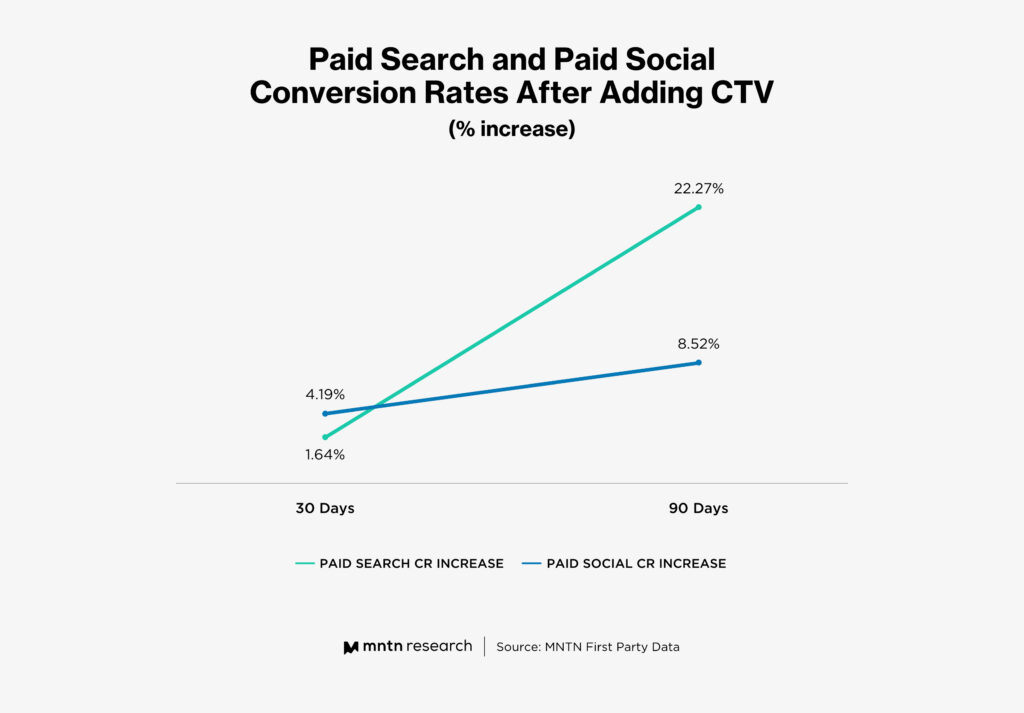Research Digest
How Thinking by ‘Encounters’ Makes for a More Effective CTV Strategy
by Melissa Yap4 min read
Abstract
- Advertisers should approach their media planning by ‘encounter’, rather than medium, channel or touchpoint.
- An ‘encounter-first’ approach expands what is possible, creating new opportunities to experiment with channels and formats that lend a competitive advantage.
- This mindset can be applied to performance channels like CTV, where an aggregated ‘video’ buy across other owned channels minimizes excess frequency and increases reach.

Marketers experience a brand very differently to consumers. On the brand side, advertisers often assemble their marketing plans between channels, with delineations drawn when one channel ‘ends’ and another begins. However, it looks much different from a customer viewpoint. This article explores how advertisers can best approach their media and creative strategy with CTV using an ‘encounter’ approach, to maximize performance.
“How Do You Want Your Customer to Feel?”
When thinking by encounter, advertisers should ask themselves this key question: “How do I want my customer to feel at various points of the journey?” This lends to a more holistic media experience, and is better tailored to the way customers consume media. An encounter-led experience aims to make every interaction with your brand seamless, since each ‘encounter’ unifies each message and interaction. Instead of thinking by channel separately, brands should think which format the customer will be experiencing the brand. For example—a video encounter means any video content consumed on screen, whether that be social media, Connected TV or display.
An Encounter Led Experience Naturally Complements Connected TV Advertising
Encounter-first thinking expands the pool of media options, and helps advertisers spot untapped opportunities not yet uncovered by competitors. Connected TV advertising was designed to complement encounter-led thinking, since it is not considered a siloed channel by any means.
Specifically, performance-geared Connected TV advertising solutions like MNTN Performance TV treat the TV screen as one (major) spoke that respects the other channels that make up a holistic marketing strategy. It often casts a ‘halo’ effect through providing ongoing optimizations and learnings that can be applied across other channels—and amplifies its performance. An analysis of MNTN Performance TV first-party data revealed an increase in conversion rates by over 22% on paid search, and almost 9% on paid social, 90 days after adding MNTN to their marketing mix (refer to chart at the top).
Since this whole process is automated by nature, advertisers don’t need to seek out these encounters manually. Some Connected TV advertising solutions like MNTN Performance TV deliver the brand message to the intended audience at the right place/format and on content that they are likely to engage. For example, a viewer might see a CTV commercial on their favorite streaming show with their mobile in hand (as many viewers do). While they are out and about, this same branded message would be ‘extended’ across their mobile phone and also on their laptop and/or tablet later on in the day while they are working. All of these media encounters combined give a greater breadth to the customer experience, and therein the customer relationship to the brand.
How to Build Creative Assets on Connected TV to Support Encounter Thinking
Global media agency, Wavemaker, released their Growth Trends 2023 report, which covered creative consideration for brands. One of these includes building creative assets by media encounter, rather than channel, to deliver greater media and messaging for the consumer. Let’s look at an example of what this looks like for a recent Paramount+ launch, where the streaming giant wanted to showcase their expanded content library. Originally, broadcast television was the first choice, but given summer programming limitations, they instead delivered their message on the silver screen via cinema advertising.
In the next launch phase, they wanted to further showcase their content library on social media, through a digital homepage takeover driven by emojis that the user could interact with. Each of these activations could have also been led through Connected TV advertising.
If we were to look at how this could be approach from a Connected TV advertising lens:
Phase One: Build several 15” or 30” second Connected TV advertising spots, each featuring one of the content offerings on Paramount+. These could be built in-house or through a video-as-a-subscription offering like QuickFrame by MNTN to help conceptualize and bring multiple iterations to life within a key turnaround. Utilize a performance based CTV advertising solution to A/B test these various iterations across Paramount+ audience segments on streaming networks that they are likely to watch.
Phase Two: Reinforce the brand message from the CTV ads above across other owned channels. Utilize the existing creative and also create new iterations, reformatted for tablet, laptop or desktop. The same audiences above would be delivered the original message via these additional encounters within a single CTV campaign.
Conclusion
360-campaigns call for encounter-led, rather than channel-led thinking, where brand messages and objectives are aligned by format based on how the consumer receives the brand message. This is because from a customer’s perspective, a brand isn’t shaped by a single interaction or touchpoint, but the entire customer journey. Advertisers who employ this approach see greater returns and a more efficient use of budget instead of treating each channel as an individual silo. Connected TV advertising solutions that automatically integrate other brand channels within a single campaign, complement this encounter-led approach by ‘extending’ the life of the campaign and reaching users at each encounter in an engaging way that prompts recall and action.
Subscribe to the MNTN Research Weekly
Sign up to receive a weekly feed of curated research, sent straight to your inbox.
Resources